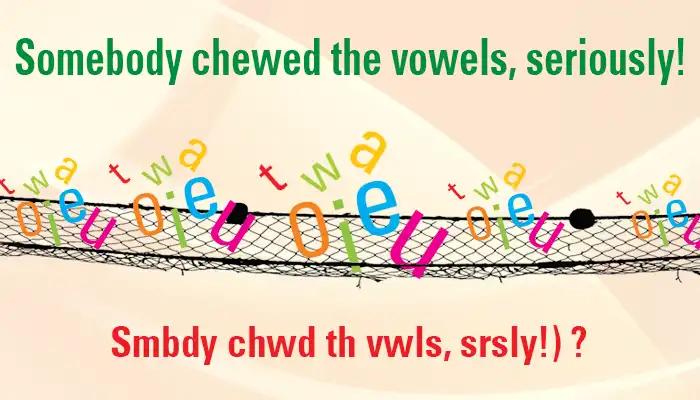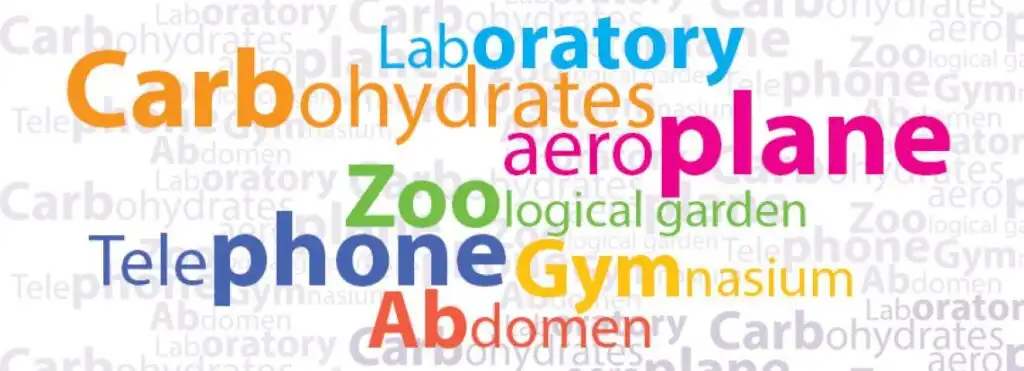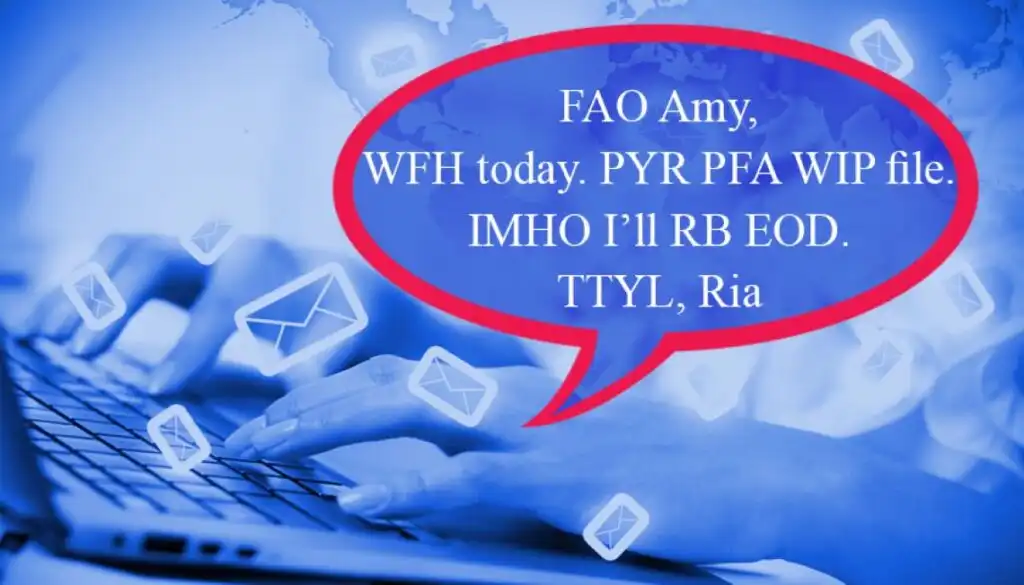
3 Rs of Abbreviation – Resist, Re-evaluate, Revert
15 April 2019
Panchalee Thakur
Abbreviate if you must, not because you can.
We see a liberal use of abbreviations in the form of truncated words, acronyms and initialisms in formal, written communication today.
Instead of simplifying complicated words and making it easier for the reader – the basic idea behind abbreviations – using too many of them tends to create confusion instead.
How often have you had to copy-paste an abbreviated word on your Google search bar to check its meaning?
Do you remember the awkward moment when you were unsure about an acronym but hesitated to ask the meaning for fear of appearing ignorant?
The purpose of abbreviating must always be ease of reading and not ease of writing (for someone who wants to avoid typing the same words again and again).
This is a rule of thumb we often forget.
Too many, too short
We are now expressing even our most profound thoughts in less than 140 characters. Instructions and emotions in e-mails appear in stripped-down language. We don’t think twice before “disemvowelling” — the practice of dropping vowels from a word while typing out a message.
This habit of reducing and squeezing is now reflecting even in formal communication.
There was a time when the place where scientists did their experiments was a 10-letter word that rolled off the tongue like a transverse wave. Now, its pithy three-letter version, “lab”, does the job. When was the last time you said “carbohydrate”? “Carb” has taken its place in both spoken and written language. From the well-entrenched “zoo”, “phone”, and “plane”, to new entries “gym” and “abs”, the list of acceptable truncated words is growing fast.

Sometimes an acronym gets so cosy that its full form does not get a chance to make an appearance ever again. Do you remember that “laser” was once Light Amplification by Stimulated Emission of Radiation, followed by the acronym in capital letters in parentheses? “Laser” is a perfect example of a word that went through the entire cycle of starting out in its full glory, carrying on as an acronym in capital letters and finally, settling down as a regular noun with no capitalisation.
Here’s another one that has completed this new word-adoption curve: “scuba”, which is a short form for Self-Contained Underwater Breathing Apparatus.
These full forms have become so obsolete that they now make tough entries in quiz competitions. The most rampant, and often the most annoying, form of abbreviation, however, is initialism. Some of these are widely accepted and writers use them unabashedly, in the belief that readers understand what they stand for – for example, IT instead of information technology or CEO instead of chief executive officer. Some are more colloquial in usage. For example, most businesses understand LoC as a Letter of Credit. But in Singapore, it could easily be confused with another legal document – a Letter of Consent issued by the government before certain visa holders can work in the country. In India, the LoC has high emotive value – it is the Line of Control that separates India controlled Jammu and Kashmir from Pakistan control territory.
Making it an Exception, not the Rule
Language evolves, with new words entering the popular lexicon and old usages getting lost and forgotten. However, what poses a problem in formal communication is the adoption of new and colloquial terms which leave the reader confused.
Consider these situations.
A common initialism in business documents is F&A, which could mean Finance and Accounting or Facilities and Administrative. So if somebody asks you if your F&A costs have gone up, be sure to ask which F&A she or he is asking about.
A random search revealed that “RPA” has 135 different expansions under six different categories (http://acronyms.thefreedictionary.com/RPA). But the one definition that I was looking for – Robotic Process Automation – was not in the list. So make that 136.
You might argue that one should pick the meaning from the context. But it’s not always straightforward.

Sometimes an abbreviation is not as well-understood as we assume it to be. A common usage in emails is “EOD”, which stands for “end of day” as in “I’ll revert to you EOD”. Some prefer “EOB” (end of business) or COB (close of business). I read a message from a lady on an online forum: she had received an email that said “EOB” and she wanted to know what it meant. She didn’t want to appear foolish by asking the sender of the email.
This is a big problem with abbreviations: you wonder if it’s alright to ask the meaning. After all, it’s your IQ that is at stake – which, depending on the situation, could be your “intelligence quotient” or your “ignorance quotient”!
Is it No-no; Is it Maybe?
The next time you decide to keep it short, remember some basics. Ask yourself these questions before you decide whether or not to abbreviate.
Is it necessary to abbreviate?
Will it increase readability?
Will every one of my potential readers understand it?
Let me answer each of these questions.
An abbreviation may be acceptable, but is it required? For example, I don’t understand why “number” needs to be “No.”. Sometimes it comes without the period and a reader could confuse it with “no”.
You can write World Bank as WB after the first instance; there is no possibility of confusion in the reader’s mind. But is it necessary? We don’t say “WB,” so why write “WB?” Similarly, when we don’t say “govt”, why write it that way and not as “government”?
Too many acronyms or initialisms affect the readability of the text. In a long article or brochure where you have provided the full form in the first instance and then proceeded with only the acronym or initials, the reader has to look for the first instance to recall the meaning if she has forgotten it. Imagine how distracting it is for the reader.
In today’s connected world, you cannot be certain enough where your communication reaches and who reads it. Terms that are acceptable in your region or industry may not be so to those outside. Before you put an abbreviation down, think of the lowest common denominator among your readers. Make that the new recruit, a college graduate or a potential customer who is new to your line of business. And only if that person is likely to understand the shortened version should you use it.
Colloquialism also brings in a casual tone to communication, and unless you’re writing about popular culture or music or travel, it is best confined to college magazines.

However, not all abbreviations are easy to discard. There are some that are universally (well, almost) understood, with the context making their meaning even clearer, so you will not be improving the copy by providing their expanded form. For example, IT, CEO, BA for a degree or BC for a year. However, there is a conundrum: if I have let “CEO” into the copy, what about CFO (Chief Finance Officer), or CMO (Chief Marketing Officer), or newer entrants like CPO (Chief People’s Officer)? The argument will be to expand these other designations as they may not be universally well-known. If so, what about consistency in writing style? You may be compromising on consistency by allowing one and not the others.
Often writers assume the use of abbreviations makes them appear familiar with the topic; they like the idea of being with-it, someone who knows it all. It’s the same reason why they use jargon. It makes them look smart – at the risk of making the reader feel foolish.
Style Guide, Glossary for Quick Reference
A way out of ambiguities and dilemmas is to create a content style guide that everyone in the organisation follows. Make it an online resource that anyone can access easily. Provide search facilities for quick and easy reference. Make it lively, with examples of abbreviations to avoid and situations that call for exceptions.
Creating an exhaustive style guide is a one-time investment of time and effort. After you have completed it, you will only need to revise it periodically to make new entries or modify existing ones.
Technical documents where you find it difficult to avoid abbreviations must include a glossary of terms at the end of the document or by way of page footnotes. Include a glossary or footnotes even after you’ve followed the practice of expanding the abbreviated term in the first instance. If it’s an online document, consider providing links to abbreviated words that will take the reader to the glossary. That way the reader will be spared the trouble of having to go through several pages to locate the full form if she or he has forgotten it.
Keeping it short often comes at the risk of sounding too casual, colloquial or trendy. Or you end up converting a document into engineer-speak that resembles hieroglyphics and needs frequent decoding for it to make sense. And in formal communication, you would rather clear doubts than create new ones, and be effective rather than fashionable.
